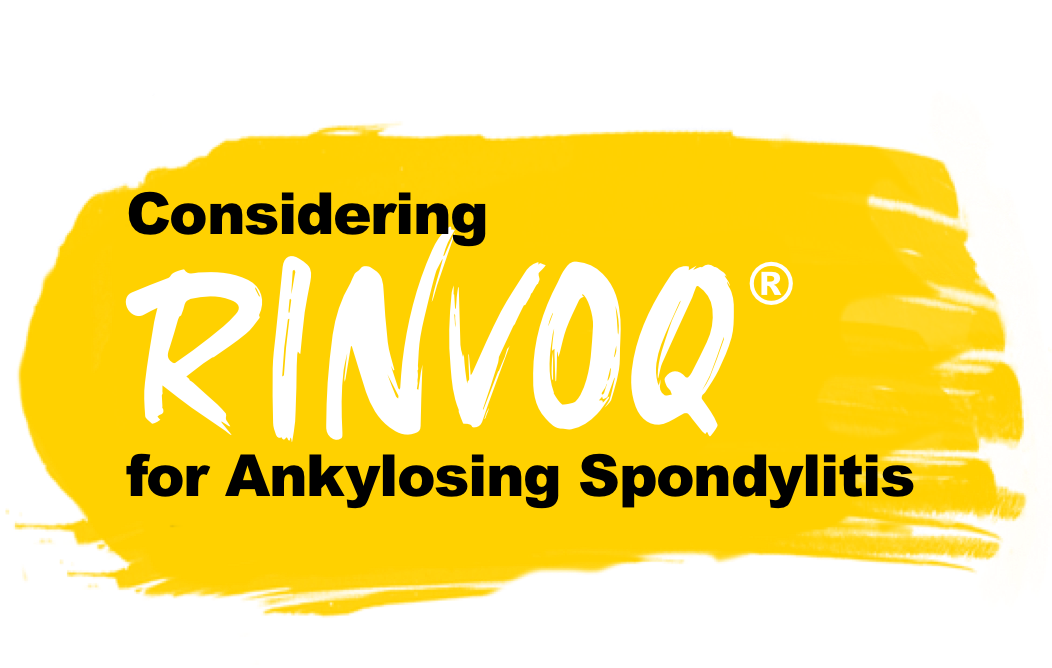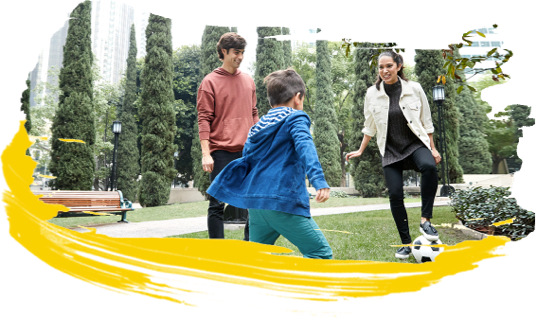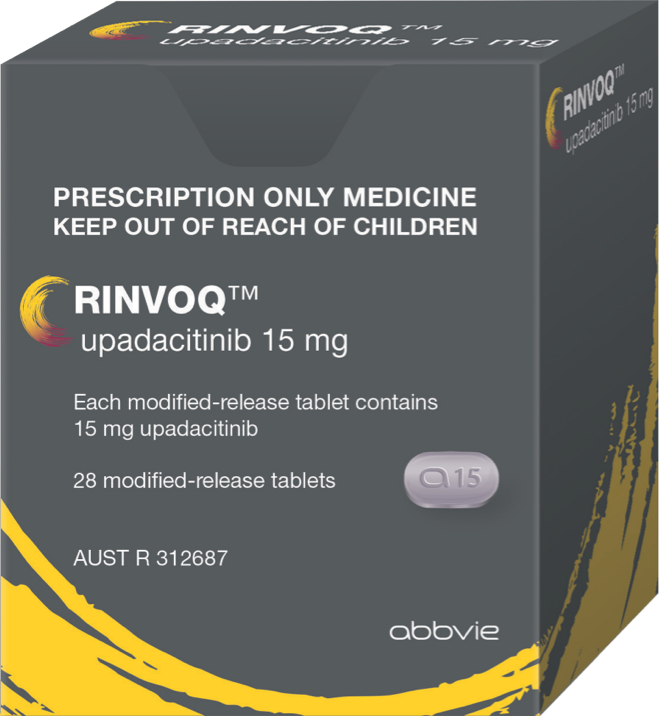
Consider RINVOQ® for Ankylosing spondyliti
If your current ankylosing spondylitis treatment isn't adequately relieving your symptoms, RINVOQ® may help.
With just one dose every day RINVOQ® may reduce symptoms of active ankylosing spondylitis.1
Ask your doctor if RINVOQ® could be right for you.
RINVOQ® may help reduce back pain — including night back pain, stiffness, and inflammation in the spine — in adult patients with active ankylosing spondylitis.1,2
Although there is no cure for ankylosing spondylitis (AS), early diagnosis and good management may slow the progression of the disease, control inflammation and reduce damage to the spine.3
Treatment usually involves medication to reduce inflammation and prevent joint damage, and can include:3,4
- pain relief medicines such as paracetamol.
- corticosteroid injections.
- non-steroidal anti-inflammatory drugs (NSAIDs) such as diclofenac or ibuprofen.
- disease-modifying anti-rheumatic drugs (DMARDs) – such as biologicals.


RINVOQ® for AS in New Zealand
The recommended dose of RINVOQ® for AS is 15 mg once daily, taken with or without food.1
RINVOQ® is only available with a prescription, so if you are experiencing symptoms of AS despite your current treatment, consult your rheumatologist to see if RINVOQ® is right for you.
RINVOQ® is not currently subsidised for AS and you will need to pay the full cost of this medication.
Tackle AS with RINVOQ®
The efficacy and safety of RINVOQ® 15 mg once daily was assessed in two randomised, placebo-controlled clinical trials involving over 600 patients aged 18 years or older with active ankylosing spondylitis.1 Each trial had a primary endpoint at 14 weeks and included a long-term extension for up to 2 years.1 The studies concluded that compared to placebo groups, a greater percentage of patients who received RINVOQ® 15 mg daily experienced the following:
Significant improvement in signs and symptoms of disease activity.1,5-7*
- Rapid response: many patients show a response between 2 to 4 weeks after starting treatment.5-7
- One study showed that many patients were able to maintain their response 2 years after starting treatment.8
Improvement in physical function** and pain:1,5-7
- Improvement in total back pain, observed as early as Week 11,6,7 and at Week 2 for nocturnal back pain.1,5-7#
- Improvements in the overall level of neck, back, or hip pain, peripheral pain, and swelling.1,5-7ф
- In one study improvements were maintained through 2 years.1,8
Improvements in spinal mobility^, health-related quality of life^^, overall health†, and fatigue.‡1,5-7
Improvement of inflammatory signs in the spine as assessed by MRI – maintained through 2 years.1,5
*Primary measure to assess disease activity was ASAS40 at Week 14. A score of ASAS40 indicates a >40% improvement in AS symptoms from treatment start.9
**Assessed by the Bath Ankylosing Spondylitis Functional Index (BASFI), which determines the degree of functional limitation in patients with AS.10
#Total Back Pain component of ASAS response
фAssessed using the Bath Ankylosing Spondylitis Disease Activity Index (BASDAI): the gold standard for measuring and following disease activity and thus functional status in people with AS.10
^Measured using Bath Ankylosing Spondylitis Metrology Index (BASMI): a composite index used to assess clinically significant changes in spinal mobility.10
^^Measured by ASQoL.11
†Measured by ASAS Health Index.12
‡Measured using a score called FACIT-F, with higher scores indicating less fatigue.13
Frequently Asked Questions about RINVOQ®
When should I expect to see and feel an improvement?
Clinical trials (see results above) suggest you may see improvements in signs and symptoms, pain, function, disease activity, health-related quality of life, and MRI-detected spine inflammation with RINVOQ® by Week 14. Improvements may occur as early as 2 to 4 weeks, based on the trials.1,5-7 However, some patients will not respond within these timeframes. It's important to be patient and stay on track with your dosing schedule.1
Will the benefits last?
During the clinical trial extension periods, results suggested that many patients taking RINVOQ® who experienced improvements in their symptoms at 14 weeks continued to see them up to 2 years.1,8
Will RINVOQ® cure my disease?
Unfortunately, there are currently no treatments available that can cure AS. RINVOQ® will not cure your condition but may help slow the progression of the disease, control inflammation and reduce damage to the spine.3
What else can I do to take care of my disease besides taking medications?
In addition to taking medication to reduce inflammation, treatment often involves lifestyle measures. Alongside our own RINVOQ® Resources page, both the Arthritis New Zealand and Health Navigator websites offer many helpful tips.3,4
What does this mean for me?
RINVOQ® may help to reduce the back pain (including night back pain), stiffness, and inflammation in your spine caused by AS, in a once-daily dose.1,2
But to find out more about how RINVOQ® could become part of your treatment plan, you’ll first need to have a discussion with your rheumatologist.